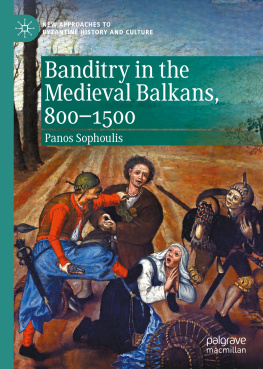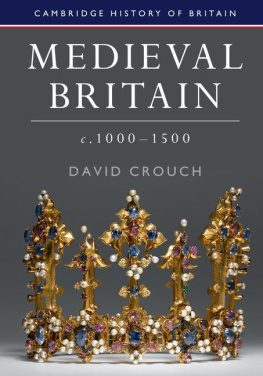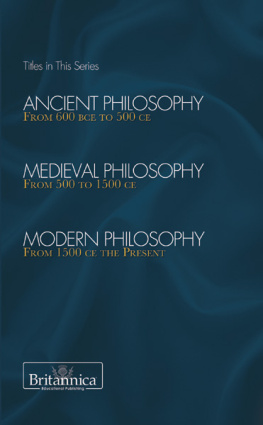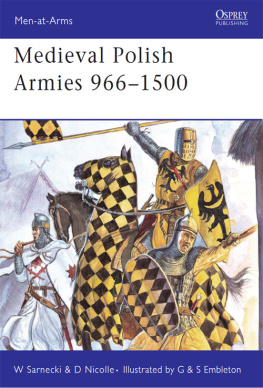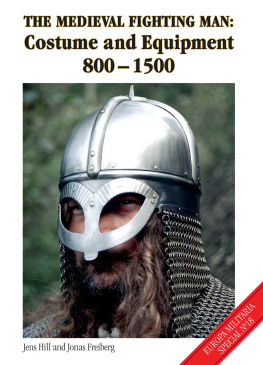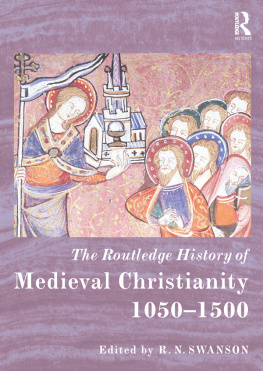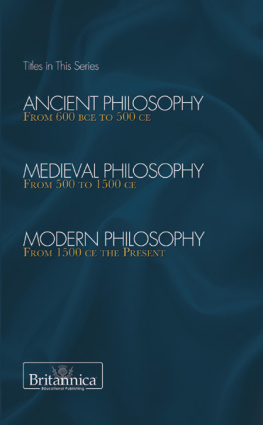Medieval Wars 500–1500
Here you can read online Medieval Wars 500–1500 full text of the book (entire story) in english for free. Download pdf and epub, get meaning, cover and reviews about this ebook. City: London, year: 2013, publisher: Amber Books, genre: History. Description of the work, (preface) as well as reviews are available. Best literature library LitArk.com created for fans of good reading and offers a wide selection of genres:
Romance novel
Science fiction
Adventure
Detective
Science
History
Home and family
Prose
Art
Politics
Computer
Non-fiction
Religion
Business
Children
Humor
Choose a favorite category and find really read worthwhile books. Enjoy immersion in the world of imagination, feel the emotions of the characters or learn something new for yourself, make an fascinating discovery.

Medieval Wars 500–1500: summary, description and annotation
We offer to read an annotation, description, summary or preface (depends on what the author of the book "Medieval Wars 500–1500" wrote himself). If you haven't found the necessary information about the book — write in the comments, we will try to find it.
Unknown: author's other books
Who wrote Medieval Wars 500–1500? Find out the surname, the name of the author of the book and a list of all author's works by series.
Medieval Wars 500–1500 — read online for free the complete book (whole text) full work
Below is the text of the book, divided by pages. System saving the place of the last page read, allows you to conveniently read the book "Medieval Wars 500–1500" online for free, without having to search again every time where you left off. Put a bookmark, and you can go to the page where you finished reading at any time.
Font size:
Interval:
Bookmark:
THE ENCYCLOPEDIA OF WARFARE

This digital edition first published in 2013
Published by
Amber Books Ltd
7477 White Lion Street
London N1 9PF
United Kingdom
Website: www.amberbooks.co.uk
Appstore: itunes.com/apps/amberbooksltd
Facebook: www.facebook.com/amberbooks
Twitter: @amberbooks
Publishing Manager: Charles Catton
Project Editors: Sarah Uttridge and Michael Spilling
Design Manager: Mark Batley
Design: Colin Hawes, Andrew Easton and Rick Fawcett
Cartographer: Alexander Swanston at Red Lion Media
Consulting Editors: Marcus Cowper and Chris McNab
Proofreader: Alison Worthington and David Worthington
Indexers: Malcolm Henley, Michael Forder and Penny Brown
With thanks to Patrick Mulrey, Ben Way and Martin Dougherty for their assistance
Copyright 2013 Amber Books Ltd
ISBN: 978-1-78274-119-0
All rights reserved. With the exception of quoting brief passages for the purpose of review no part of this publication may be reproduced without prior written permission from the publisher. The information in this book is true and complete to the best of our knowledge. All recommendations are made without any guarantee on the part of the author or publisher, who also disclaim any liability incurred in connection with the use of this data or specific details.

www.amberbooks.co.uk
Titles available in the Encyclopedia of Warfare series:
Ancient Wars
c.2500BCE500CE
Medieval Wars
5001500
Early Modern Wars
15001775
Revolutionary Wars
1775c.1815
Imperial Wars
18151914
World Wars
19141945
Modern Wars
1945Present
by Dennis Showalter
The Encyclopedia of Warfare offers five characteristics justifying its possession. First, it is chronological. Its entries reflect a fundamental characteristic of history. History is linear. It starts somewhere in time. It goes somewhere in time. Its events interact in a temporal context. And the encyclopedias chronological perspective enables making connections that otherwise might remain obscure. It contextualizes, for example, the 1147 siege of Lisbon with the Crusader-Turkish wars of the same period and in the process demonstrating the comprehensive aspect of ChristianMuslim rivalry. Lisbon was far from Jerusalem only in terms of miles.
The encyclopedia is also comprehensive. It eschews a Western-centric perspective that too often sacrifices understanding for familiarity. The chronological chapters are subdivided by time and place. Thus they integrate the ancient wars of China and of South and South-East Asia, the battles of early Rome and those of Ireland in the twenty-fifth century BCE (a single entry, to be sure, but meriting consideration!) Cross-referencing cannot be easier. And that cross referencing enables not merely juxtaposition, but comparison on a global scale of wars methods and wars consequences.
The encyclopedia is concise. Its entries honour a time-tested formula. They address who, what, when, where, why, and thereby offer frameworks for further investigation of taproots and ramifications. But that does not mean a one size fits all template. Events recognized as important Hattin, Gettysburg, the Somme are more fully developed without distorting the essentially economical format. Nor are the entries mere narratives. They incorporate analytical dimensions relative to their length and insightful whether phrases, sentences or paragraphs like the comment that Crusader Jerusalems 1187 surrender to Saladin involved ransoming most of the population at reasonable rates!
The encyclopedia is user-friendly and clearly written. Not only are its more than five thousand entries individually intelligible. The graphics synergise with the text, enhancing rather than challenging or submerging it. The maps in particular are models of their kind, both accurate and informative.
Finally the encyclopedia is concentrated on warmaking. It eschews military historys framing concepts, whether economic, cultural or gender, in favour of presenting war at its sharp end. That enables covering the full spectrum: wars and revolutions, campaigns and counter-insurgencies, battle and sieges. And in turn the encyclopedias format facilitates integrating, rather than compartmentalising, wars levels and wars aspects. In these pages Marathon and Hastings, the rise of the Roman Empire and the British Empire, become subjects for comparison and contrast.
The Encyclopedia of Warfare, in short, admirably fulfills the definition of a work that provides information on many elements of one subject. Its value, however, is also in context. This work makes broader contributions to military historys reference apparatus, and to its reference mentality, on two levels. The encyclopedia complements the electronic eras meme of six degrees of separation. The idea that everything is no more than six steps away from everything else is a natural byproduct of websurfing, where a half-dozen mouse clicks can lead far away indeed from the original reference point. It also encourages diffusion: engagement on peripheries at the expense of the centre.
The Encyclopedia of Warfare encourages and facilitates refocusing on wars essential elements: the planning, conduct and result of using armed force. Diffusion is a natural aspect of the currently dominant approach to military history as an academic discipline. The concept of pivotal events has been overshadowed by an emphasis on underlying structures: reaching out from the operational towards the institutional, the political and the social dimensions. Wars sharp end at best jostles for place. It can lose out to an intellectual disdain that is also aesthetic and moral. Warfare, in the sense of making war, is arguably to the twenty-first century what sex allegedly was to the Victorians. It involves emotions nice people do not feel and actions nice people do not perform. Writing about it becomes the new pornography, pandering to appetites best left neither nurtured nor acknowledged.
The encyclopedia contributes balance and perspective to this discourse. Its contents reinforce the specific, unique nature and function of armed forces compared to any other institutions. Its entries demonstrate that warmaking has had a direct, significant impact on human affairs; that combat has fundamentally altered historys course in both short and long terms. To understand this is to understand the world in which we live. And The Encyclopedia of Warfare enables that understanding in an impressive fashion.
DENNIS SHOWALTER
June 2013
The wars of the medieval period were brutal affairs, conducted primarily at close range with edged and impact weapons, supported by the bow and arrow and the crossbow. Yet by the end of the era, gunpowder weapons were starting to reshape the nature of the battlefield, from infantry battles to siege warfare against fortresses.
CAMLANN, 537
The Annales Cambriae record the deaths of King Arthur and Mordred, often interpreted as belligerents. Gildas contemporary descriptions of internal discord suggest civil war, but neither this nor the location are certain.
ARFDERYDD, 573
Gwendoleu of Arfderydd, the area encompassing Hadrians Wall and Carlisle, fought against Peredur and Gywri of Strathclyde. The
Font size:
Interval:
Bookmark:
Similar books «Medieval Wars 500–1500»
Look at similar books to Medieval Wars 500–1500. We have selected literature similar in name and meaning in the hope of providing readers with more options to find new, interesting, not yet read works.
Discussion, reviews of the book Medieval Wars 500–1500 and just readers' own opinions. Leave your comments, write what you think about the work, its meaning or the main characters. Specify what exactly you liked and what you didn't like, and why you think so.

